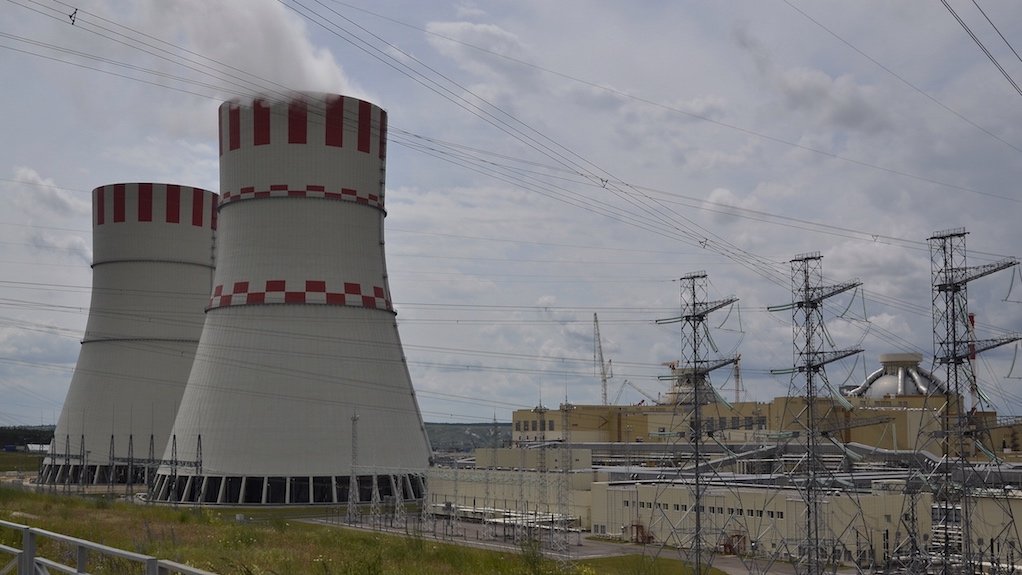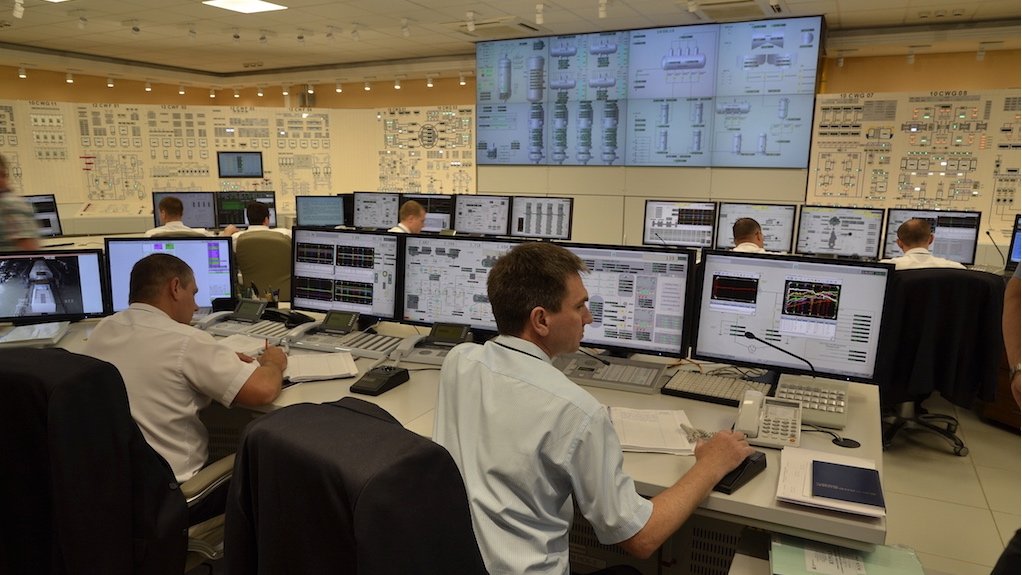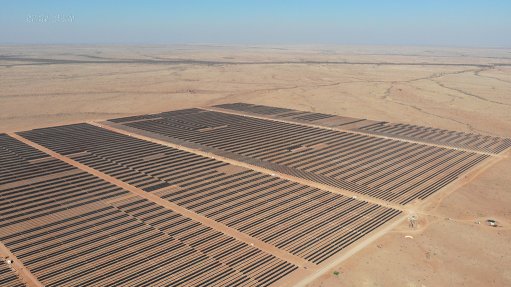Historic Russian nuclear site hosts oldest and newest nuclear technology



NOVOVORONEZH NUCLEAR PLANT The second and newest nuclear power plant within the Novovoronezh nuclear complex features the safest and most powerful atomic technology available on the market
Photo by Dylan Slater
CONTROL ROOM The new control of the second Novovoronezh nuclear power plant, the first unit of which came into full commercial operation in February
Photo by Dylan Slater
During a nuclear power plant (NPP) site visit that coincided with the yearly Atomexpo 2017, which was held in Moscow last month, Russian State-owned atomic corporation Rosatom showcased its safest and most modern nuclear reactor technology to delegates at the landmark Novovoronezh NPP (NvNPP) site.
The town of Novovoronezh is host to two NPP complexes – NvNPP-1 and NvNPP-2, housing five and two reactors respectively. The complexes are known jointly as the Novovoronezh NPP, which is located in the Voronezh Oblast, south of Moscow.
NvNPP is the origin of modern nuclear power development in Russia, having commissioned the world’s first commercial water-moderated and -cooled reactors in the 1960s – NvNPP-1 Unit 1, which used Rosatom’s VVER 210 model reactor capable of producing a net electrical output of about 200 MW.
VVER, or water-water energetic reactor, is a concept based on the reactors’ use of water moderation and water cooling within a pressurised vessel.
NvNPP Unit 1 was constructed in 1964, with units 2 to 4 having been constructed from 1969 to 1980. Each unit is essentially a prototype of the original VVER design. NvNPP Unit 2 (a VVER 365 series reactor), for example, produced 336 MW, while units 3 and 4 (VVER 440 series reactors) produced 385 MW.
NvNPP Unit 5 (a VVER 1000 series reactor) signified a leap in development, more than doubling the nameplate output of the reactor, with the capacity to produce 1 000 MW of electrical power.
After 20 years of operation, NvNPP Unit 1 was decommissioned in 1984, followed by the decommissioning of Unit 2 in 1990.
However, illustrating that NPPs can have their operational lives extended, Rosatom undertook a step-by-step modernisation programme, starting in 1995 at NvNPP-1, thereby ensuring compliance with modern safety standards as the corporation was refining its technology. Several actions – a first for Europe – were performed on NvNPP units 3 and 4 to extend their design life by 15 years.
Following the successful implementation of the modernisation programme, NvNPP Unit 3 was decommissioned only in 2016; Unit 5 is still in operation, having surpassed its original design service expectancy in 2010. In line with the modernisation programme, the service life time of Unit 5 has been extended by 25 to 30 years, with the latest possible decommissioning date moved from 2010 to 2040.
NvNPP-2 currently hosts the most advanced and powerful nuclear reactor offered by Rosatom – the VVER 1200 III+, which is also one of the most powerful and safest nuclear reactors in the world, capable of generating 3 200 MW of thermal power and 1 200 MW of electrical power.
NvNPP-2 Unit 2 (NvNPP Unit 7) is currently under construction.
The VVER III+ is the third-generation-plus series of nuclear reactors, employing improvements made through innovations and refinements derived from lessons learned from developing second-generation and second-generation-plus reactors. The bulk of the improvements to the III+ reactors entailse the incorporation of active and passive safety features. Passive safety features include a double-wall containment building with a ventilated inner-wall cavity surrounding the reactor.
The inner containment building prevents leaks within the reactor building, while the outer containment building can withstand natural, human-induced and anthropogenic – such as explosions and aircraft collisions – impacts.
The passive safety features can operate in instances of complete loss of power, and can perform all critical functions without assistance from active safety systems or operator interference.
In addition, the NvNPP-2 units 1 and 2 (NvNPP units 6 and 7) employ passive heat-removal systems, which serve to use natural resources to remove heat over a prolonged term and operate under instances of complete loss of power to the plant. This system can be automatically actuated without human intervention, which is especially useful for emergency scenarios.
Comments
Announcements
What's On
Subscribe to improve your user experience...
Option 1 (equivalent of R125 a month):
Receive a weekly copy of Creamer Media's Engineering News & Mining Weekly magazine
(print copy for those in South Africa and e-magazine for those outside of South Africa)
Receive daily email newsletters
Access to full search results
Access archive of magazine back copies
Access to Projects in Progress
Access to ONE Research Report of your choice in PDF format
Option 2 (equivalent of R375 a month):
All benefits from Option 1
PLUS
Access to Creamer Media's Research Channel Africa for ALL Research Reports, in PDF format, on various industrial and mining sectors
including Electricity; Water; Energy Transition; Hydrogen; Roads, Rail and Ports; Coal; Gold; Platinum; Battery Metals; etc.
Already a subscriber?
Forgotten your password?
Receive weekly copy of Creamer Media's Engineering News & Mining Weekly magazine (print copy for those in South Africa and e-magazine for those outside of South Africa)
➕
Recieve daily email newsletters
➕
Access to full search results
➕
Access archive of magazine back copies
➕
Access to Projects in Progress
➕
Access to ONE Research Report of your choice in PDF format
RESEARCH CHANNEL AFRICA
R4500 (equivalent of R375 a month)
SUBSCRIBEAll benefits from Option 1
➕
Access to Creamer Media's Research Channel Africa for ALL Research Reports on various industrial and mining sectors, in PDF format, including on:
Electricity
➕
Water
➕
Energy Transition
➕
Hydrogen
➕
Roads, Rail and Ports
➕
Coal
➕
Gold
➕
Platinum
➕
Battery Metals
➕
etc.
Receive all benefits from Option 1 or Option 2 delivered to numerous people at your company
➕
Multiple User names and Passwords for simultaneous log-ins
➕
Intranet integration access to all in your organisation




















